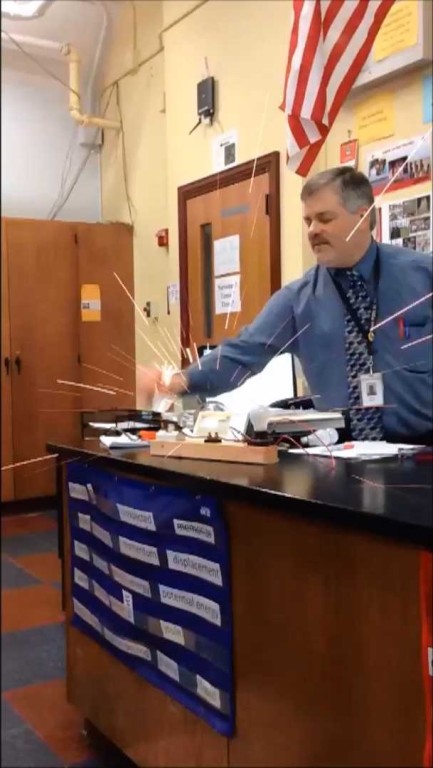My physics classes are studying electricity. One of the demos I do for electricity is to show how a fuse works by exploding a strand of wire.
For the demo, I made a “fuse” holder by taking the knife out of a knife switch and replacing it with a second jaw. For the “fuse,” I placed a single strand from 26-strand 16 AWG copper stranded wire into the above holder, in line with the light bulb and a fully-functional knife switch. According to the calculator on Cirris’s Model of a Wire Fusing in Free Air page, it would theoretically require a current of 10.2 A to melt this strand of wire.
For the “fuse,” I placed a single strand from 26-strand 16 AWG copper stranded wire into the above holder, in line with the light bulb and a fully-functional knife switch. According to the calculator on Cirris’s Model of a Wire Fusing in Free Air page, it would theoretically require a current of 10.2 A to melt this strand of wire.
For my circuit, I placed my “fuse” in line with a (normally functioning) knife switch and a 15 W incandescent light bulb. When I plugged the circuit in and closed the knife switch, the bulb illuminated, as expected. A 15 W bulb has a resistance of about 850 Ω, and draws a current of about 0.13 A when connected to 110 VAC, which is much less than the current needed to melt the wire.
Then, I opened the switch and clipped a wire across the light bulb socket, creating a short circuit. When I closed the switch, the “fuse” blew. (I.e., the strand of wire exploded spectacularly.)
One of my students took a phone video of the demo. The pictures shown below are the two frames immediately after the bright flash, showing the trails of white-hot copper flying out from the “fuse”.
According to MS Movie Maker, the frames are 1/100 of a second apart, so these images would be 10 ms and 20 ms after the fuse blew.
Needless to say, now that I’ve seen these pictures, I will wear safety goggles when I perform this demo in the future!



Based on those photos, it looks like the time the “shutter” was closed is miniscule, and the length of the streaks correspond to about 10ms of travel for each spark. Judging by the spark that is passing in front of your face, I’d guestimate the length of the streak to be around 40cm (maybe as much as 50cm, but unlikely to be more, and definitely longer than 30cm). That would mean the spark is moving at close to 40m/s, or 90 mph.
…because Safety is always first in Mr. Bigler’s class!